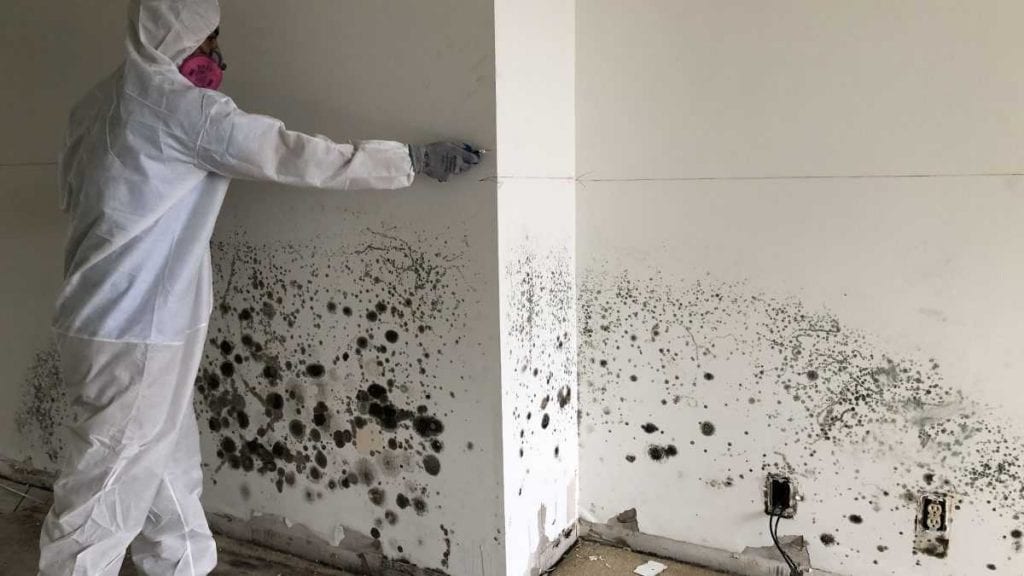Mold growth can be a common issue for home and business owners. Unlike mildew or the encroachment of weeds, most strains of mold can grow without sunlight and take hold on a variety of surfaces, even inside walls. This issue can be especially problematic because the mold can damage wiring, insulation, and drywall. When it comes to mold in walls, removal can be tricky, but there are a few steps you can take to ensure it is properly eradicated and will not return.
1. Follow Your Nose
Once mold starts to grow unchecked and finds a food source, such as drywall, it creates a waste product called mycotoxin. The larger the growth, the more the mold eats, and the stronger the musty scent of the mycotoxins becomes.
You may notice the smell as being faint at first, but it may become more noticeable as time goes on. If you believe mold is present, call a professional mold removal service, such as United Water Restoration Group, for assistance before proceeding with the next step.
2. Isolate the Area
Mold spores tend to travel on shoes, clothing, and even your pets’ fur. Once these spores are shaken or dusted off in other areas, they might find new, moist places to attach and grow. To reduce the risk of spreading mold, isolate the area where you suspect it is present. Keep doors closed and ask people to keep clear until mold removal technicians arrive.
3. Turn Off Your HVAC System
Mold patches hiding inside your walls can shed mold spores, which can travel throughout your home via the heating, ventilation, and air conditioning ducts. It is a good idea to turn the system off until your restoration technicians arrive to prevent the continued spread of spores. Consider using standing fans or space heaters to maintain a comfortable temperature inside your home in the meantime.
4. Look for a Moisture Source
While it is a good idea to leave the actual mold removal to the restoration technicians, you may be able to cut off the moisture source that attracted spores in the first place. Leaking pipes behind the walls, humid conditions, and previous flooding that was not cleaned up correctly might all be causes of the current mold issue. Let your techs know if you discover the source of the moisture or if the room has experienced a flood in the past few months.
5. Collaborate With Your Restoration Service
While it is a good idea to let restoration professionals deal with mold in walls removal, you can assist their efforts by giving them some information about your home or business. Prepare a list of facts and a timeline of any flooding or water incidents and what you might have noticed since then. If the mold growth seems to have no apparent cause, note the age and state of the plumbing system, as older pipes and joints may have to be replaced due to leakage.
The more mold removal professionals learn about the affected space, the more efficiently they may be able to perform the work. Even what seemed like a minor flood can cause mold to grow inside walls, so communicate as much information and history as you can.
6. Learn About the Mold Removal Process
Once your restoration technicians arrive, they will likely speak to you about how they plan to remove mold from your interior walls, where it might have come from, and what steps they will take to ensure it will not return. The more you understand the techniques behind mold removal, the more confident you might feel about its effectiveness.
There are several strategies your mold removal professionals may take for eradicating mold patches. They will probably perform cuts into the drywall to discover how far the fungi has spread and what type of mold they are dealing with. There are several strains that may be lurking behind your walls:
- Aspergillus
- Cladosporium
- Black mold (Stachybotrys)
Since all of these types of mold can shed spores, your restoration technicians may not allow you to witness the removal of mold; however, you will likely get a full report before any repair options are discussed. The cost of the removal will likely vary depending on the severity of the growths and whether any insulation, wiring, or drywall needs to be replaced.
When you have mold in walls, removal can be troublesome. However, knowing which steps to take once its presence is confirmed may help you navigate the process with greater ease and confidence.
We provide services in Ormond Beach, Florida, Jacksonville, Florida, Daytona Beach, Florida, Orlando, Florida, Tampa, Florida, Melbourne, Florida, and many other locations around Florida!





